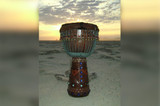The Cymbals in Your Rig
Shopping for cymbals may feel overwhelming at times. In addition to the variety of companies from which to choose, there are so many different types of cymbals that one may not know where to begin. For this reason, it is good to know some basic information about cymbals and the sounds they produce.
The basic cymbal types are hi-hat, ride, and crash. In addition to those, there are special effects cymbals and combinations of sounds, such as the common crash/ride cymbal. Each different cymbal type produces its own characteristic sounds and cymbal choice can either add to or take from your overall musical experience. In order to choose cymbals that benefit your work, it is good to consider both the sound you want and the genre of music you are playing.
Hi-hats come in pairs, one placed above the other. Cymbals come in different weights and with hi-hats, the bottom cymbal is usually heavier than the other. Hi-hats are on a stand and played by pedal, allowing the sounds they produce to be controlled by how open or closed the pair is. Hi-hats are the main timekeeper, so it is wise to invest in a quality pair.
Rides are traditionally used to play rhythm patterns and provide a supportive sound. Rides are generally larger and heavier than crashes used in the same setup. Ride cymbals are known for their definition and “ping”. This is the second most important cymbal for most drummers.
Crash cymbals are supposed to do exactly what their name implies. They mostly provide an accent sound. This is the cymbal you might notice being quieted by the drummer. These cymbals come in a variety of sizes; the smaller crashes are usually called splash cymbals.
Another common cymbal type is the crash/ride. This cymbal is extremely versatile and is designed to be a cross between the crash and ride cymbals. Because the crash/ride is a mix of the two cymbal types, it will not play exactly like either one. Although a drummer gives up certain identifying attributes with a crash/ride, the versatility makes up for the loss.
China cymbals are another well-known type of cymbal. They are named for their origins and the gong-like sound they produce. These cymbals are mainly played for effect and a common adjective for the sound they produce is “dirty”. Their look is distinctive, with most having an upturned edge. Many drummers turn this cymbal upside down for playing.

A cymbal is more than just an accent to a beat, it is an instrument all its own. With centuries-old craftsmanship and wisdom behind each cymbal produced, the tone and sound of a cymbal and what it brings to a rhythm and to the music is unsurpassed. Choosing your cymbals is an adventure in creating your own unique sound while drumming, encouraging personal growth and allowing the nuances of your rhythmic talent to ring free no matter where you play.
Recent Posts
-
What is the Best Size Djembe for Beginners?
If you're new to the world of percussion and interested in learning the djembe, you're in for a t …16th Jul 2024 -
The Benefits of Becoming a Drumming Teacher: Transforming Passion into Profession
Why become a drumming teacher? Becoming a drumming teacher is an excellent way to share your pas …22nd May 2024 -
What Makes the Djembe Drum a Spiritual Instrument in African Music?
Origin and history of the Djembe drum The Djembe drum originates from West Africa and holds sign …16th May 2024




